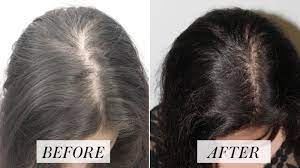If you’re dealing with hair loss, you’re not alone. Millions of men and women experience hair loss due to a variety of causes. Fortunately, there is a solution to help you regain your full head of hair – platelet-rich plasma (PRP) therapy. In this blog post, we’ll be exploring the science behind PRP for hair loss, the different types of treatments available, and how they can help you get back to feeling and looking your best.
Understanding Hair Loss
Hair loss is a common concern for many individuals, but understanding its underlying causes is crucial to finding effective solutions. Hair loss can be attributed to various factors, including genetics, hormonal imbalances, medical conditions, stress, and certain medications. It can occur gradually or suddenly, and its severity can vary from mild thinning to complete baldness.
To better comprehend hair loss, it’s important to understand the hair growth cycle. Hair follicles go through a continuous cycle of growth, rest, and shedding. However, when the hair growth phase becomes shorter and the rest and shedding phases lengthen, hair loss becomes noticeable.
There are different types of hair loss, such as androgenetic alopecia (male or female pattern baldness), alopecia areata (patchy hair loss), and telogen effluvium (excessive shedding). Each type has distinct characteristics and underlying causes.
By gaining a deeper understanding of hair loss, individuals can make informed decisions about the most suitable treatment options, such as PRP therapy, to address their specific needs.
The Science behind PRP
Platelet-rich plasma (PRP) therapy is a cutting-edge treatment for hair loss that harnesses the power of the body’s own healing abilities. PRP contains a high concentration of platelets, which are rich in growth factors and other bioactive proteins. These growth factors play a crucial role in stimulating hair follicle growth and increasing the thickness and density of existing hair.
The science behind PRP lies in its ability to promote tissue repair and regeneration. When PRP is injected into the scalp, the growth factors in the platelets initiate a cascade of events, including the release of stem cells and the promotion of new blood vessel formation. This increased blood flow to the hair follicles provides essential nutrients and oxygen, revitalizing the hair follicles and promoting hair growth.
Furthermore, PRP therapy has been shown to decrease inflammation, a key factor in hair loss. By reducing inflammation in the scalp, PRP helps create a favorable environment for hair follicles to thrive.
Overall, the scientific basis of PRP therapy for hair loss makes it an exciting and promising option for individuals seeking a safe and effective solution to their hair loss concerns.
What is the PRP Procedure?
The PRP procedure is a non-surgical and minimally invasive treatment that involves extracting a small amount of the patient’s own blood. The blood is then processed in a centrifuge to separate the platelet-rich plasma (PRP) from the rest of the blood components.
Once the PRP is obtained, it is injected into the scalp at specific areas where hair loss is occurring. The injections are performed using a fine needle, targeting the hair follicles and the surrounding tissues.
The PRP solution, rich in growth factors and other bioactive proteins, stimulates the hair follicles to promote new hair growth and improve the thickness and density of existing hair. The entire procedure typically takes around 30-45 minutes, and patients can usually resume their regular activities immediately afterward.
PRP for hair loss is generally performed as a series of treatments, spaced a few weeks apart, to achieve optimal results. The number of sessions required may vary depending on the individual’s needs and the severity of hair loss.
Who is an Ideal Candidate for PRP for Hair Loss?
PRP therapy for hair loss is a versatile treatment option that can benefit a wide range of individuals experiencing hair loss. Ideal candidates for PRP therapy include those who are in the early stages of hair loss, have thinning hair, or want to prevent further hair loss. It is suitable for both men and women and can be effective for various types of hair loss, including androgenetic alopecia, alopecia areata, and telogen effluvium.
PRP therapy is also a great option for individuals who prefer non-surgical and minimally invasive treatments. Since PRP uses the patient’s own blood, it is a safe and natural solution that minimizes the risk of allergic reactions or other complications.
However, it is important to note that PRP therapy may not be suitable for everyone. Individuals with certain medical conditions, such as bleeding disorders or autoimmune diseases, may not be ideal candidates for this treatment. It is recommended to consult with a qualified healthcare provider to determine if PRP therapy is the right option for your specific hair loss concerns.








